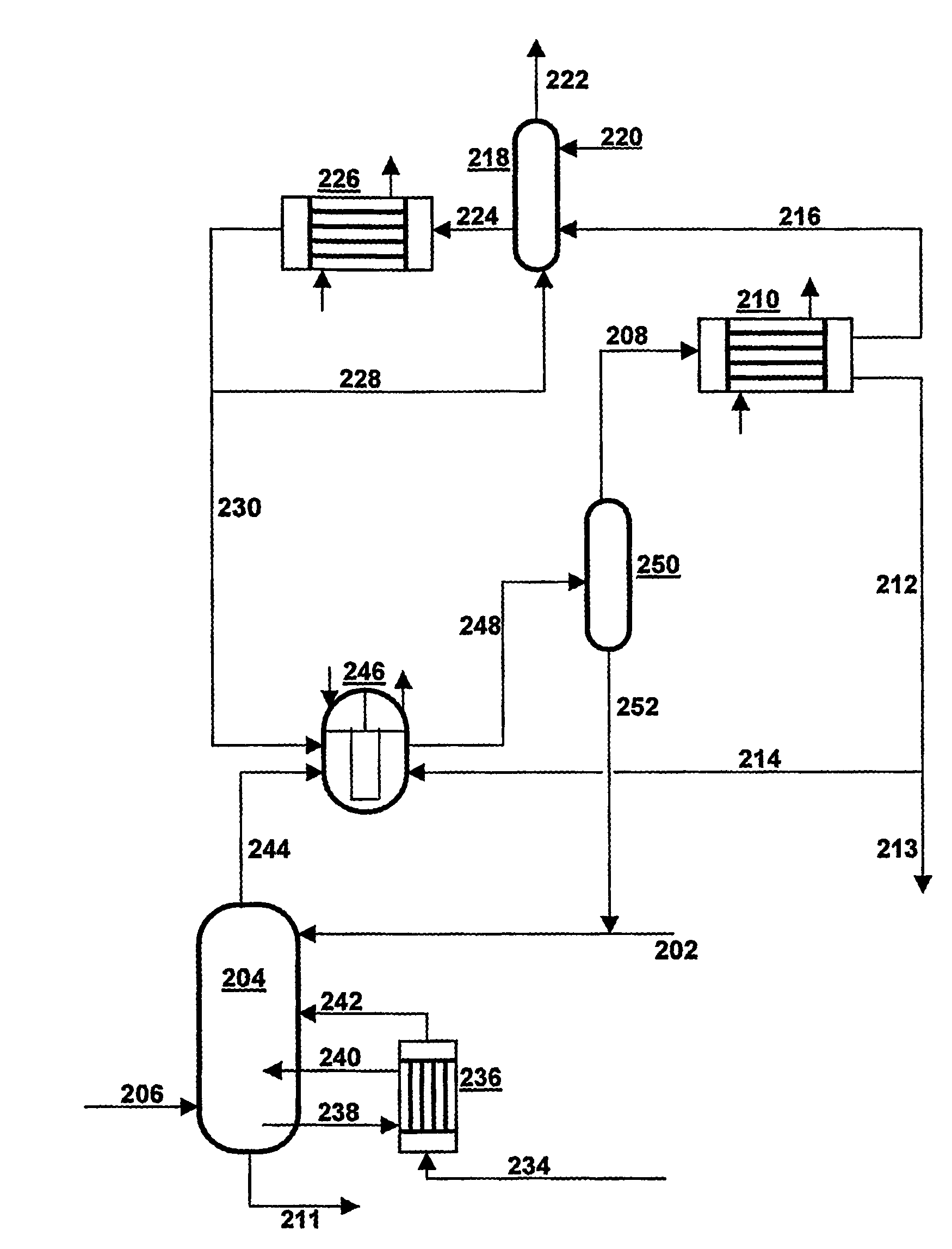Process for separating NH3 , and optionally also CO2 and H2O, from a mixture containing NH3 , CO2 and H2O
a technology of nh3 and co2 is applied in the field of separating nh3 from a mixture containing nh3 and optionally co2 and h2o, which can solve the problems of difficult control of nhsub>3/sub>separation devices, increased steam consumption, and increased risk of solid formation, so as to reduce energy consumption and reduce the effect of nh3 separation and separation, and increase the operational possibilities of composition
- Summary
- Abstract
- Description
- Claims
- Application Information
AI Technical Summary
Benefits of technology
Problems solved by technology
Method used
Image
Examples
Embodiment Construction
[0029]In FIG. 1 a mixture of NH3, CO2 and H2O is supplied via line 102 to NH3 separation device 104, which is designed as a distillation column and is preferably operated at a temperature between 15-160° C. and at a pressure between 0.1 and 6 MPa. Air is also supplied to the NH3 separation device 104, via line 106, to protect the equipment against corrosion. The stream consisting substantially of gaseous NH3 is discharged via line 108 to ammonia cooler 110; the mixture is discharged as a liquid solution of NH3 and CO2 in water via line 111 and transferred to a CO2 separation device—not drawn. In ammonia cooler 110 almost all NH3is liquefied and discharged via line 112, partly to be recirculated via line 114 to NH3 separation device 104, partly via 113 to be used elsewhere. From ammonia cooler 110 there also comes a gas phase, which consists substantially of inert gases and some NH3 and which is conveyed via line 116 to scrubber 118. In scrubber 118 the stream from line 116 is brough...
PUM
| Property | Measurement | Unit |
|---|---|---|
| wt % | aaaaa | aaaaa |
| pressures | aaaaa | aaaaa |
| pressures | aaaaa | aaaaa |
Abstract
Description
Claims
Application Information
 Login to View More
Login to View More - R&D Engineer
- R&D Manager
- IP Professional
- Industry Leading Data Capabilities
- Powerful AI technology
- Patent DNA Extraction
Browse by: Latest US Patents, China's latest patents, Technical Efficacy Thesaurus, Application Domain, Technology Topic, Popular Technical Reports.
© 2024 PatSnap. All rights reserved.Legal|Privacy policy|Modern Slavery Act Transparency Statement|Sitemap|About US| Contact US: help@patsnap.com










